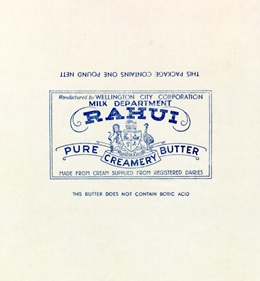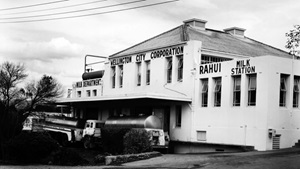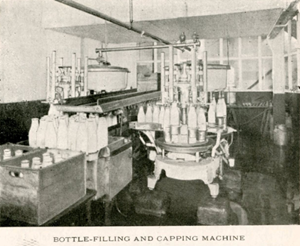But that’s exactly what Wellington City Council used to do, right up until 1987 in fact.
What’s more is the Council had the monopoly to sell and deliver milk in the city, with the power to grant, refuse, and revoke licenses to all other prospective providers.
.jpg?h=217&w=250&la=en&hash=01B01D72E0E824B24D9B093B321D668FF490DCDF)
The reasoning for this is spelt out in the Wellington City Milk-supply Act 1919: “For the purpose of securing for the inhabitants of the city an adequate supply of milk of good quality and at a reasonable price.”
Wellington City Libraries Local and NZ History Specialist Gábor Tóth says the Act was established in response to concerns over the quality of milk being supplied to Wellington residents, and the high cost of fresh milk due to a spike in export prices for dairy products during World War I.
“The Wellington City Milk-supply Act 1919 is a lovely historic quirk that is still in place as it has never been repealed, but it hasn’t been enforced in decades.
“From 1919, the Council took complete control over the treatment and distribution of milk in Wellington – possibly the first Council in the world to do so – and it established a system for town milk supply which was copied around the country.

“Council even had its own branded butter, ‘Rahui’, and in the early 1970s it introduced Wellingtonians to what was promoted as an exciting new product from Europe – yoghurt.”
The Council set up the Municipal Milk Department in 1918.
“Initially the Council just concerned itself with the collection and treatment of milk at a depot which it established in Dixon Street. Distribution was contracted out to deliverers, many of whom used the ‘can and dipper’ method of distribution.
“By 1922 the Council had come to recognise the health risks associated with milk cans and so assumed complete control of supply from farm gate to consumer when it took over all milk distribution and introduced bottles.
“This move led to the purchase of the Council’s first dairy factory at Rahui on the outskirts of Otaki and soon the Council became the sole supplier and distributor of milk to homes and schools across the city.”

Gábor says this monopoly position was protected under the Act, which also made provisions for the Council to distribute free milk to people in need.
“Council may supply milk to the poor”, states Section 14 of the Act. “The Council may, out of its District Fund, purchase milk for the purpose of supplying the same to the poor, and may supply the same free or at such reduced charges as it thinks fit to such persons as it thinks fit.”
Gábor says the Act also made it illegal for licensed agents to sell, or even possess, skim milk as this generally indicated that they had either diluted the milk with water, or that butter-fat had been removed for separate sale as cream or butter to increase profit margins at a time when strict price controls were in place.
“The manner in which the milk department was established became the model for the rest of New Zealand and it introduced many innovations such as a guaranteed system of milk supply, payment to farmers on a quality rather than quantity basis (percentage of milk-fat per gallon), pasteurisation, the introduction of milk tokens, zoning of milk rounds, and developing a tanker transport system.”

The Municipal Milk Department continued to operate as a branch of the Council until 1987 when its legal status changed to a Local Authority Trading Enterprise (a council-owned company) known as Capital Dairy Products Ltd (CDP).
CDP continued to operate until the Council agreed to sell its shares in the company to Tui Milk Products in February 1991. Tui merged with Kiwi Cooperative Dairies in 1996 and the resulting company amalgamated with the NZ Dairy Group in 2001 to form Fonterra.
A booklet titled ‘A brief history of the Municipal Milk Supply’ was produced for distribution across New Zealand to help disseminate information about the department as many other councils were interested in emulating Wellington's then-revolutionary system.
A 1947 film about the Wellington Milk Department, which by this time had moved into its bigger Tory Street premises that still remains, was produced by the Government Film Studios.